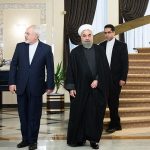On Think Progress’s Wonk Room, Matt Duss reviews Carnegie associate Karim Sadjadpour’s Foreign Policy article about which historical model best fits U.S.-Iran relations. (Eli covered Sadjadpour’s piece last week.)
Duss agrees with Sadjadpour’s conclusion that the Soviet Union is the best historical model to apply to Iran, but adds something: If this is the comparison, one must acknowledge the relative minuteness of the Iranian “threat” as compared to the USSR.
Duss concludes (with my emphasis):
I think this makes a lot of sense, but, having established a rough model for predicting Iran’s behavior, it’s necessary to go the next step and recognize that Iran is far, far weaker than the Soviet Union was, and doesn’t pose anything like the global threat to U.S. interests that the Soviet Union once did.
While Iran’s power in the region has clearly increased and the U.S.’s diminished as a result of the invasion of Iraq, the U.S. is still dealing from a position of considerable strength against a far weaker power in Iran, in a geopolitical environment that’s less conducive to the sort of power projection to which Iran seems to aspire. Clearly, Iran represents a challenge to a number of U.S. interests, but there are also areas of mutual interest to explore, such as its recent offer to help stabilize Afghanistan. So it’s important that we not allow ourselves to be talked into believing that the apocalypse is upon us.
To act on these observations will require a far more nuanced Iran policy — one with a horizon of decades instead of months or years. […] A more visionary policy would look back at the U.S.’s experience in the Cold War and examine the lessons learned from decades of détente with an enemy whose collapse was ultimately self-imposed.




